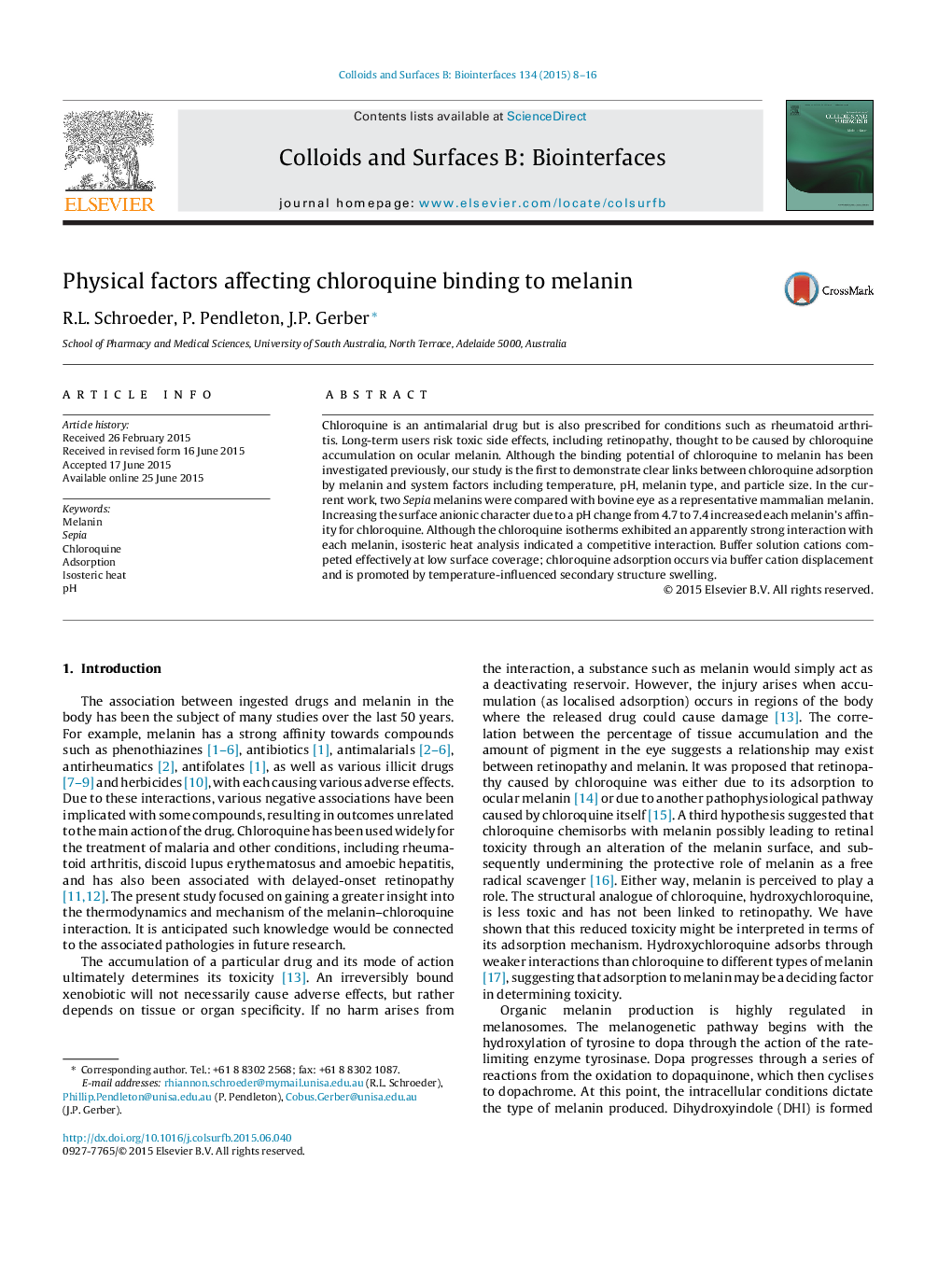| کد مقاله | کد نشریه | سال انتشار | مقاله انگلیسی | نسخه تمام متن |
|---|---|---|---|---|
| 599354 | 1454270 | 2015 | 9 صفحه PDF | دانلود رایگان |
• Sepia officinalis melanin adsorbs more chloroquine than bovine eye at pH 4.7 and 7.4.
• Multiple temperature chloroquine isotherms indicate endothermic interactions.
• Alkali ions in the buffer solution suppress adsorption.
• Secondary structure swells with rising temperature enhancing adsorption capacity.
Chloroquine is an antimalarial drug but is also prescribed for conditions such as rheumatoid arthritis. Long-term users risk toxic side effects, including retinopathy, thought to be caused by chloroquine accumulation on ocular melanin. Although the binding potential of chloroquine to melanin has been investigated previously, our study is the first to demonstrate clear links between chloroquine adsorption by melanin and system factors including temperature, pH, melanin type, and particle size. In the current work, two Sepia melanins were compared with bovine eye as a representative mammalian melanin. Increasing the surface anionic character due to a pH change from 4.7 to 7.4 increased each melanin's affinity for chloroquine. Although the chloroquine isotherms exhibited an apparently strong interaction with each melanin, isosteric heat analysis indicated a competitive interaction. Buffer solution cations competed effectively at low surface coverage; chloroquine adsorption occurs via buffer cation displacement and is promoted by temperature-influenced secondary structure swelling.
Figure optionsDownload as PowerPoint slide
Journal: Colloids and Surfaces B: Biointerfaces - Volume 134, 1 October 2015, Pages 8–16
